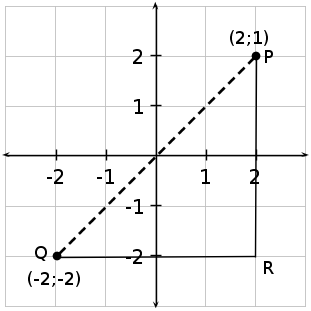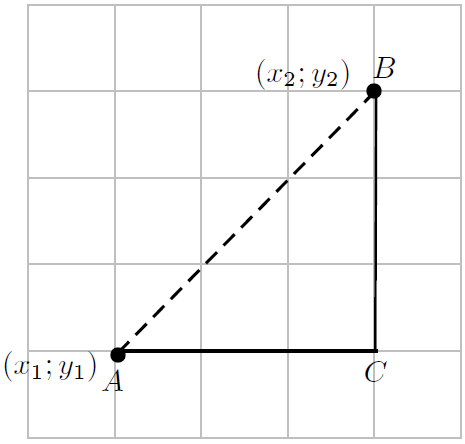| << Chapter < Page | Chapter >> Page > |
Analytical geometry, also called co-ordinate geometry and earlier referred to as Cartesian geometry, is the study of geometry using the principles of algebra, and the Cartesian co-ordinate system. It is concerned with defining geometrical shapes in a numerical way, and extracting numerical information from that representation. Some consider that the introduction of analytic geometry was the beginning of modern mathematics.
If we are given the co-ordinates of the vertices of a figure then we can draw that figure on the Cartesian plane. For example take quadrilateral ABCD with co-ordinates: A(1,1), B(1,3), C(3,3) and D(1,3) and represent it on the Cartesian plane. This is shown in [link] .

To represent any figure on the Cartesian plane, you place a dot at each given co-ordinate and then connect these points with straight lines. One point to note is in naming a figure. In the above example, we called the quadrilateral ABCD. This tells us that we move from point A, to point B, to point C, to point D and then back to point A again. So when you are asked to draw a figure on the Cartesian plane, you will follow this naming scheme. If you had the same points, and called it, for example, ACBD you would not get a quadrilateral but a pair of triangles instead. This is important. Sometimes you may be given only some of the points and you will then be required to find the other points using the work covered in the rest of this chapter.
One of the simplest things that can be done with analytical geometry is to calculate the distance between two points. Distance is a number that describes how far apart two point are. For example, point has co-ordinates and point has co-ordinates . How far apart are points and ? In the figure, this means how long is the dashed line?

In the figure, it can be seen that the length of the line is 3 units and the length of the line is four units. However, the , has a right angle at . Therefore, the length of the side can be obtained by using the Theorem of Pythagoras:
The length of is the distance between the points and .
In order to generalise the idea, assume is any point with co-ordinates and is any other point with co-ordinates .

The formula for calculating the distance between two points is derived as follows. The distance between the points and is the length of the line . According to the Theorem of Pythagoras, the length of is given by:
However,
Therefore,
Therefore, for any two points, and , the formula is:
Using the formula, distance between the points and with co-ordinates (2;1) and (-2;-2) is then found as follows. Let the co-ordinates of point be and the co-ordinates of point be . Then the distance is:
The following video provides a summary of the distance formula.
Khan academy video on distance formula

Notification Switch
Would you like to follow the 'Siyavula textbooks: grade 10 maths [caps]' conversation and receive update notifications?